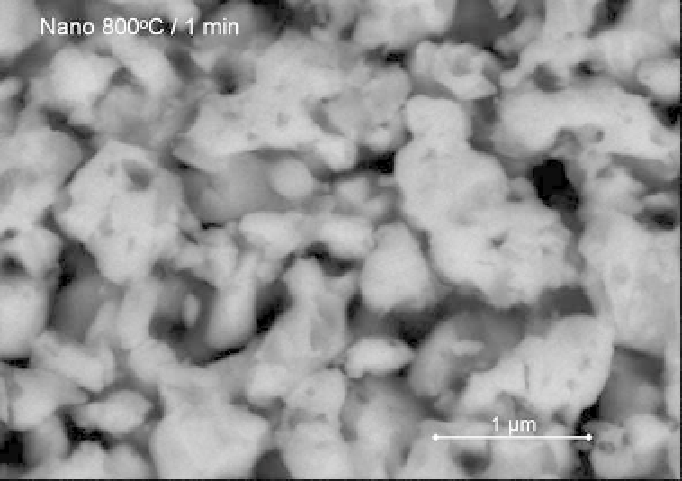Biomedical Engineering Reference
In-Depth Information
13.21
Densification and grain growth within individual aggregated
particles prior to bulk densification.
In liquid-phase sintering systems, it is believed that the solution-
reprecipitation mechanism may also help facilitate the coalescence of grains.
Direct evidence of coalescence is, however, very difficult to identify. Fang
et al.
79
studied the grain growth of nano WC during sintering and found the
growth of nanosized tungsten carbide grains within aggregates via
coalescence, as shown in Fig. 13.20. An analysis of the sintering of WC-
Co composites suggests that the lattice shift along low-energy CSL grain
boundaries is a viable mechanism for materials with a high degree of
crystallographic anisotropy.
106
Effects of agglomerates on initial grain growth
Another important factor in grain growth mechanisms during sintering of
nano particles is the role of agglomerates in grain growth. Agglomerates are
defined as loosely-packed particles forming fractals, while aggregates are
particles packed together in a more defined equiaxial shape. Mayo
3
pointed
out that grain size is often related to the size of agglomerates at the
beginning of sintering. As Mayo summarized, the larger the agglomerate
size, the higher the sintering temperature required to eliminate large inter-
agglomerate pores. By contrast, the crystallite size has little effect on the
temperature required to reach full density. The same temperatures, however,
promote grain growth to such an extent that the grain size can easily balloon
to the agglomerate size.
Fang
107
observed a similar phenomenon. Figure 13.21 shows an

